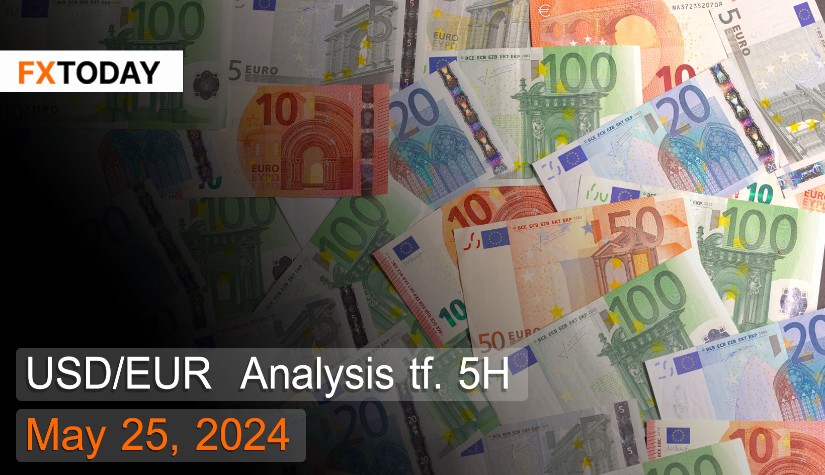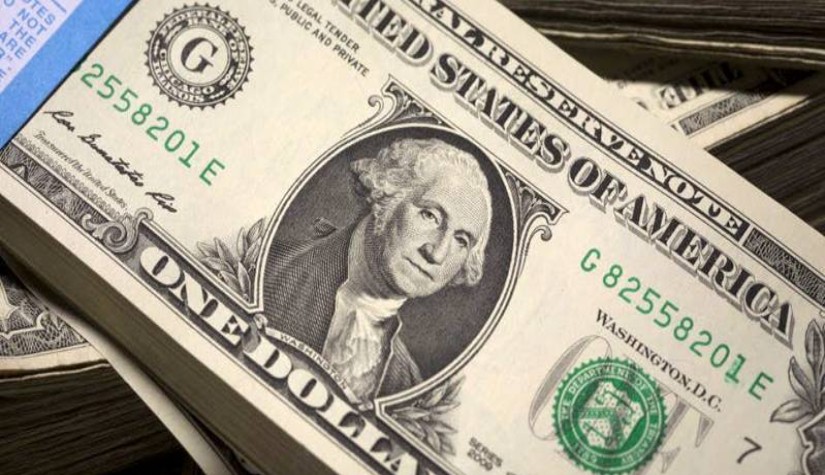The Eurozone continues to experience high labor demand.
The euro appreciating rapidly due to recent data that suggest the likelihood of further ECB rate hikes this year has diminished. The PMI continues to show ongoing expansion in private sector activity amid new orders and increasing employment. This has led investors to predict that there will only be a 60 bps rate cut this year. Meanwhile, the recent FOMC meeting minutes and comments from Fed officials indicate that interest rates will remain steady and there will be no rate cuts in the near future due to ongoing inflation concerns.
The Eurozone recorded a trade surplus of 24.1 billion euros in March, up from 19.1 billion euros in the same month last year, primarily due to a 12% year-on-year drop in imports to 221.3 billion euros, largely driven by a more than 15.9% decrease in purchases of mineral fuels, lubricants, and related materials. Imports fell from China, the US, the UK, Russia, and Norway. Meanwhile, exports declined less sharply by 9.2% year-on-year to 245.4 billion euros, mainly due to reduced exports of machinery and transport equipment.
Hourly labor costs in the Eurozone increased by 4.9% year-on-year in the first quarter of 2024, up from 3.4% in the previous period, with wages and salaries per hour worked rising by 5%. This increase in both wages and hourly earnings indicates that the domestic economy continues to grow and there is sustained labor demand, also reflecting the Eurozone economy's strong adaptability.
Eurozone inflation was confirmed at 2.4% year-on-year in April, with the slowdown largely driven by lower service costs. Additionally, continuously falling energy prices have helped companies better control costs, benefiting the prices of most essential consumer goods.
The European Commission forecasts that the EU GDP will grow by 1% in 2024, with Eurozone growth remaining steady at 0.8% in 2025. Countries expected to perform well in 2024 include Germany, France, and Italy. Meanwhile, EU inflation is projected to decrease from 6.4% in 2023 to 2.7% in 2024, and further to 2.2% in 2025.
Techical analysis data (5H)
Resistance: 0.9226, 0.9233, 0.9241
Source: Investing.com
Buy/Long 1: If the price touches support in the price range of 0.9203 - 0.9211 but cannot break the support at 0.9211, you may set a TP at approximately 0.9233 and SL at around 0.9196 or according to your acceptable risk.
Buy/Long 2: If the price breaks the resistance in the price range of 0.9226 - 0.9233, you may set a TP at approximately 0.9241 and SL at around 0.9203 or according to your acceptable risk.
Sell/Short 1: If the price touches resistance in the price range of 0.9226 - 0.9233 but cannot break the resistance at 0.9226, you may set a TP at approximately 0.9203 and SL at around 0.9241 or according to your acceptable risk.
Sell/Short 2: If the price breaks the support in the price range of 0.9203 - 0.9211, you may set a TP at approximately 0.9196 and SL at around 0.9233 or according to your acceptable risk.
Pivot point May 25, 2024 07:51 PM. GMT+7
|
Name
|
S3
|
S2
|
S1
|
Pivot Points
|
R1
|
R2
|
R3
|
| Classic | 0.9196 | 0.9203 | 0.9211 | 0.9218 | 0.9226 | 0.9233 | 0.9241 |
| Fibonacci | 0.9203 | 0.9209 | 0.9212 | 0.9218 | 0.9224 | 0.9227 | 0.9233 |
| Camarilla | 0.9215 | 0.9216 | 0.9218 | 0.9218 | 0.922 | 0.9222 | 0.9223 |
| Woodie's | 0.9196 | 0.9203 | 0.9211 | 0.9218 | 0.9226 | 0.9233 | 0.9241 |
| DeMark's | - | - | 0.9207 | 0.9216 | 0.9222 | - | - |
















